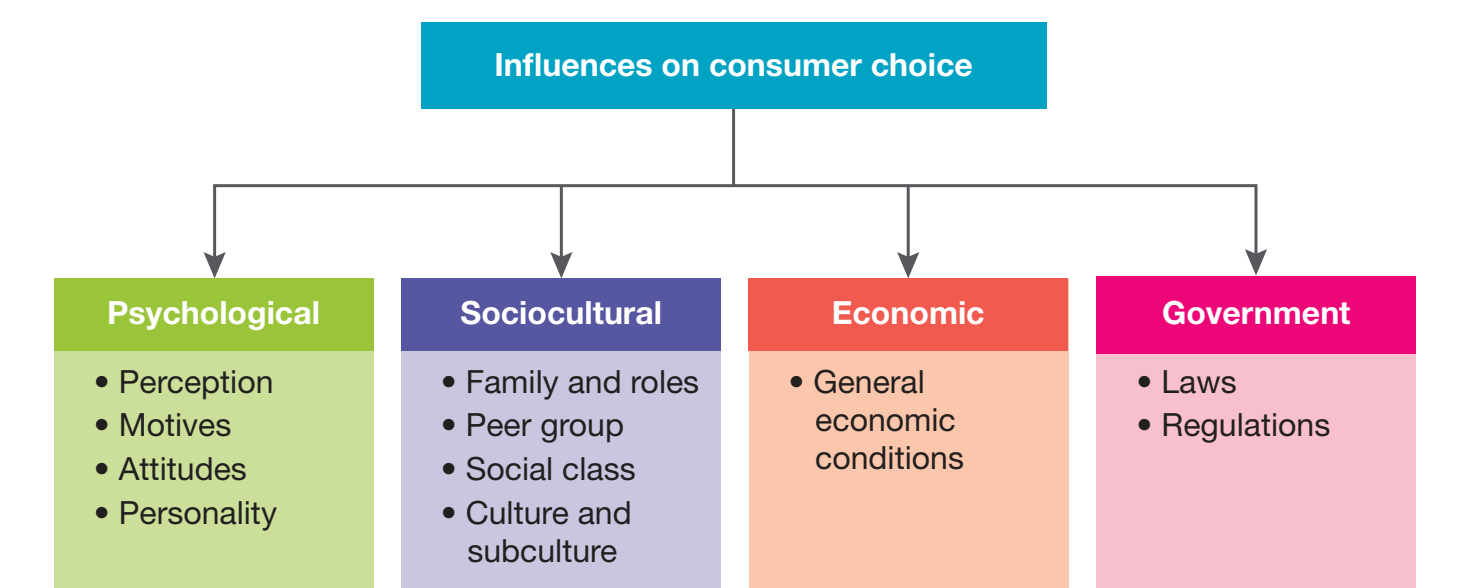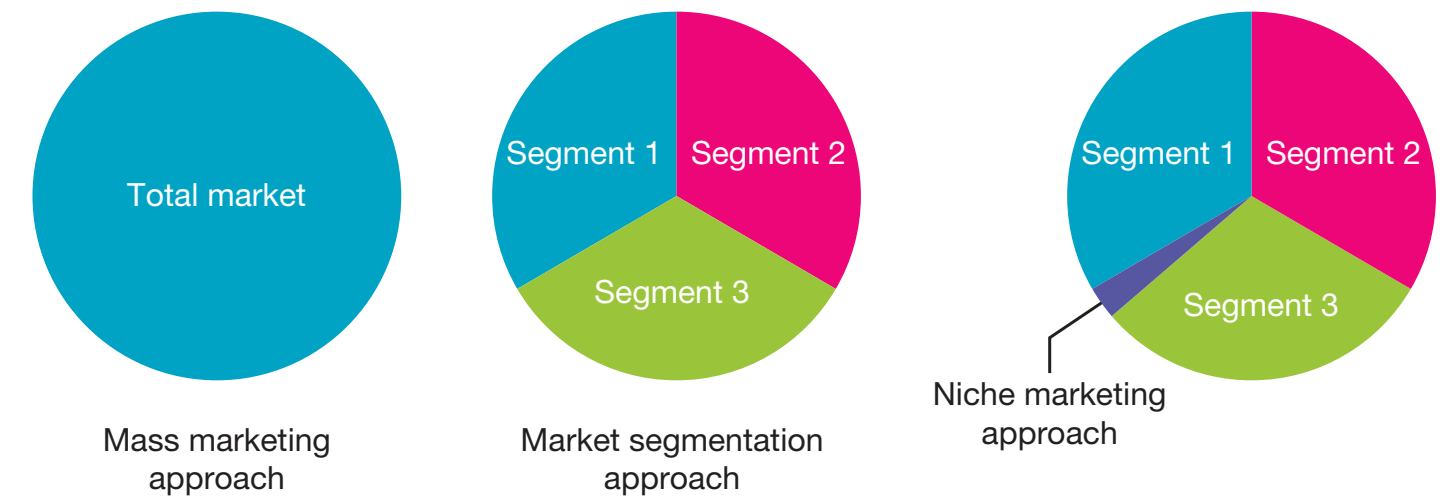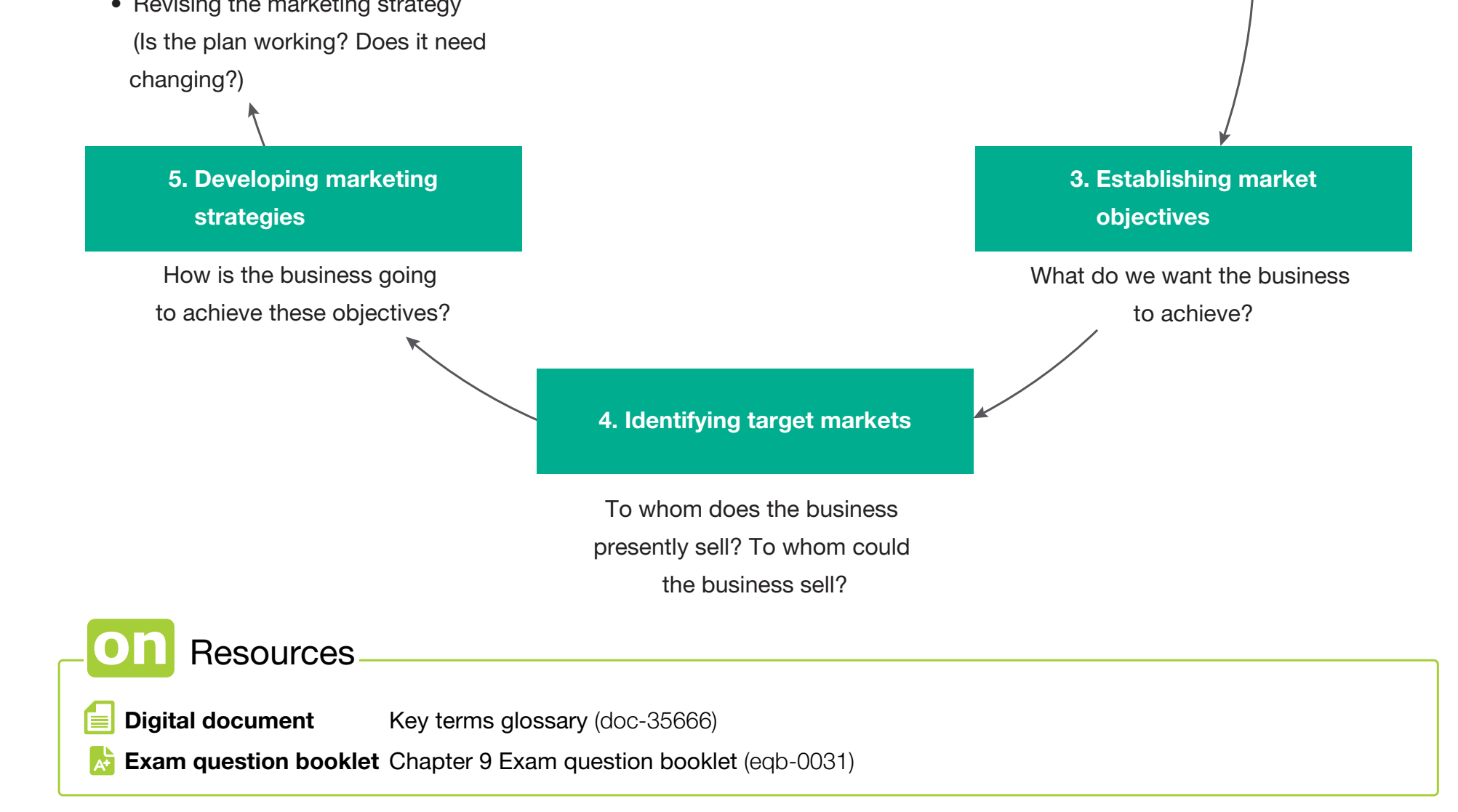Photo AI
Last Updated Sep 24, 2025
Market Segmentation Essentials Simplified Revision Notes for SSCE HSC Business Studies
Revision notes with simplified explanations to understand Market Segmentation Essentials quickly and effectively.
345+ students studying
Market Segmentation Essentials
Market segmentation is a fundamental strategy in business aimed at customising marketing efforts to address specific consumer needs within a larger market. This process involves dividing the market into distinct groups characterised by similar traits.

Definition of Market Segmentation
- Market Segmentation: The process of dividing a market into distinct consumer groups that share common characteristics.
- Purpose: Enables the precise tailoring of marketing efforts to fit consumer needs.
Segmentation guides major marketing strategy decisions by highlighting consumer needs and preferences.
Importance and Objectives
- Enhanced Marketing Role: Boosts marketing effectiveness by addressing specific consumer preferences and requirements.
- Consumer Satisfaction Impact: Segmentation is closely linked to delivering customised products/services, thereby boosting customer satisfaction.
- Profit Margin Expansion: Targeted marketing facilitates the strategic allocation of resources, enhancing profit margins.
- Example: Companies can focus on segments inclined towards premium goods to boost revenue.
- Key Objectives:
- Identify growth opportunities
- Achieve competitive advantage
- Build and sustain customer loyalty
Segmentation is essential for gaining a competitive edge and fostering customer loyalty, thereby driving market growth.
Detailed Criteria for Market Segmentation
1. Demographic Segmentation
- Demographic Segmentation: Categorises markets based on age, gender, income, education, and occupation.
- Example: Nike keenly targets young athletes through initiatives like the "Nike Ad Series for Young Runners".
Key Demographic Factors:
- Age: Influences technology and product preferences.
- Gender: Affects product design and marketing style.
- Income: Determines focus on luxury versus budget products.
- Education: Relates to the complexity of product information.
- Occupation: Frequently linked to lifestyle needs.
2. Geographic Segmentation
- Geographic Segmentation: Adapts marketing strategies based on location, climate, and culture.

3. Psychographic Segmentation
- Psychographic Segmentation: Centres on lifestyle, social class, and values for customised strategies.
Understanding Psychographics:
- Lifestyle: Vital to product targeting.
- Values: Important in defining brand alignment.
4. Behavioral Segmentation
- Behavioral Segmentation: Considers factors like usage rate, brand loyalty, and the benefits customers seek.

Concentrating on a single segmentation factor can result in missed market opportunities.
Segmentation Process
- Market Research: Gather data through surveys and consumer analytics.
- Identifying Segments: Determine smaller, homogeneous groups to target.
- Evaluating Segment Viability: Emphasise size, accessibility, and distinctiveness.
- Selecting Target Segments: Choose segments that are profitable and align with organisational goals.
Segmentation is an ongoing process. Strategies are adjusted based on consumer feedback.

Practical Benefits
- Targeted Campaign Efficacy: Creates effective campaigns by focusing on specific segments.
- Efficient Resource Use: Facilitates the optimal allocation of resources by concentrating on demographics offering the highest return rates.
- Enhanced Product Development: Automotive companies, for instance, design eco-friendly cars targeting environmentally conscious customers.
Differentiation and Positioning
- Differentiation: The practice of setting a product apart to engage target markets.
- Link to Segmentation: Enables precise market tailoring to satisfy specific needs.
Segmentation facilitates differentiation, illustrated by Nike offering customised gear for athletes as well as casual users.
Evaluation of Target Segments
Emerging technologies, such as AI, can enhance targeting accuracy.
Examples and Case Studies
- Coca-Cola: Implements segmentation to meet diverse demographics with products like Coca-Cola Zero.
- Worked Example: Coca-Cola targets the youth market through social media platforms like TikTok. Their strategy includes creating trending challenges and partnering with young influencers to connect with Generation Z consumers. This approach has increased brand engagement by 25% among users aged 16-24.

Coca-Cola's approach exemplifies how segmentation effectively broadens market reach.
Practical Insights
- Balancing segmentation criteria is crucial.
- Expert Advice: Integrate multiple criteria for a comprehensive outreach.

500K+ Students Use These Powerful Tools to Master Market Segmentation Essentials For their SSCE Exams.
Enhance your understanding with flashcards, quizzes, and exams—designed to help you grasp key concepts, reinforce learning, and master any topic with confidence!
370 flashcards
Flashcards on Market Segmentation Essentials
Revise key concepts with interactive flashcards.
Try Business Studies Flashcards45 quizzes
Quizzes on Market Segmentation Essentials
Test your knowledge with fun and engaging quizzes.
Try Business Studies Quizzes128 questions
Exam questions on Market Segmentation Essentials
Boost your confidence with real exam questions.
Try Business Studies Questions8 exams created
Exam Builder on Market Segmentation Essentials
Create custom exams across topics for better practice!
Try Business Studies exam builder24 papers
Past Papers on Market Segmentation Essentials
Practice past papers to reinforce exam experience.
Try Business Studies Past PapersOther Revision Notes related to Market Segmentation Essentials you should explore
Discover More Revision Notes Related to Market Segmentation Essentials to Deepen Your Understanding and Improve Your Mastery
96%
114 rated
Marketing strategies
Marketing Strategies: Product Differentiation
403+ studying
182KViews